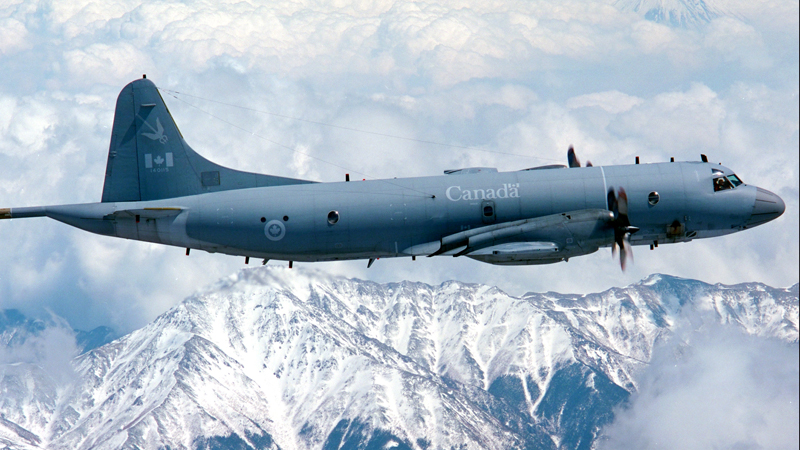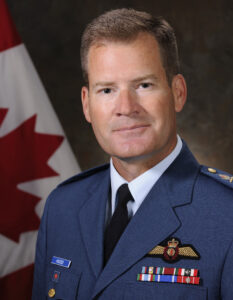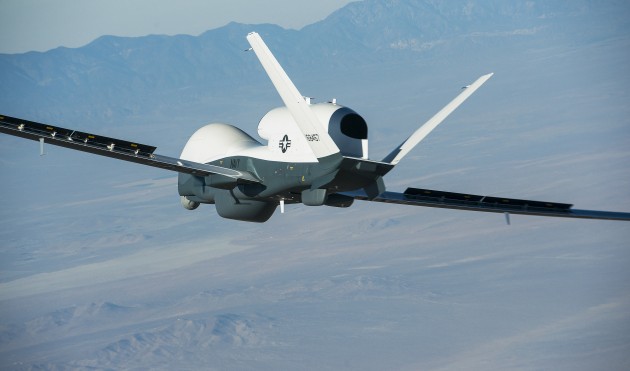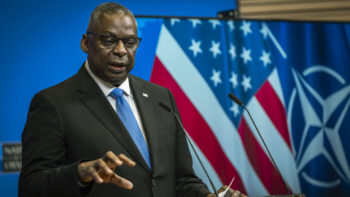
CP-140 Aurora of the Royal Canadian Air Force
The return of the Russian threat has spurred US allies to pay new attention to collective defense, not just in Europe but in the North Atlantic. No ally is more critical than Canada, strategically joined at the hip with the US in NORAD.
Recently, I had a chance to interview the head of the Royal Canadian Air Force, Lt. General Michael Hood. We discussed the evolving Canadian role defending the northeast approaches to the Americas, especially with regard to anti-submarine warfare (ASW) and the evolving strike enterprise in the maritime domain.
Currently, the Canadians are
- flying upgraded variants of the American four-turboprop C-130, called CP-140s,
- introducing new ASW helicopters, the CH-148 Cyclones, and
- upgrading their frigates for ASW operations.
The Canadian ASW force has also helped its UK counterparts keep in practice after the Royal Air Force retired its aging Nimrod aircraft.

Lt. Gen. Michael Hood
“We have been flying two members of the RAF crews on our ASW aircraft in the interim between the sunset of Nimrod and the sunrise of the P-8 (which the UK is buying),” said Lt. Gen. Hood. “We have also filled the gap left by the sun setting of Nimrod with our own ASW assets. We have done so by operating from either RAF Lossiemouth or Keflavik to help manage the GIUK gap.” That’s the Greenland-Iceland-United Kingdom gap, made famous during the Cold War as the gauntlet Soviet submarines had to run before emerging into the open ocean of the North Atlantic.
“Out of all of the NATO ASW platforms in there, the most effective one has been our CP-140,” Hood said. “I am exceptionally proud of our ASW capability and when I couple it with the new advanced capability on our upgraded frigates, I see us (as) a backbone of NATO’s ASW capability.”
He argued that the current CP-140s have better sensors than currently installed onboard in the US Navy’s new P-8s.
“We have better capability, from an ASW perspective, in the CP-140 than comes off the line presently in the P-8,” Hood said. “We have just gone through a Block III upgrade that has completely modernized the ASW capability as well as adding an overland ISR (Intelligence, Surveillance, & Reconnaissance) piece. We have replaced the wings on many major empennage points and the goal is to get our CP-140 (to last) out to about 2032, when we’re going to replace it with another platform.”

MQ-4C Triton
Drones, Space & the Future
Canada’s new defense policy has authorized adding a unmanned capability for the ASW effort as well, Hood noted. “In the next three years, we’ll be under contract for a medium altitude UAS (Unmanned Aerial System) that is going to have both domestic and coastal abilities, as well as expeditionary strike capabilities. We participate in NATO AGS (Alliance Ground Surveillance, a modified Global Hawk) as well.”
The RCAF has also been given the space mission. That means it handles the satellite side of both ASW and Arctic operations – always in close coordination with the US. “I’ve just had staff talks with General Dave Goldfein and General Jay Raymond from US Space Command,” said Hood. “We are the critical partner of your country in sharing that burden in space and making sure that we’re ready for the future.”
What does Canada bring to the partnership? Its new RADARSAT constellation will provide enhanced sensor coverage, and Canada plans to launch a polar constellation satellite system to provide for High North communication needs.
“That is actually going to finally allow us to operate UASs up above 70 degrees north.” where signals from existing satellites are blocked by the curve of the Earth, he said.
The new way of doing business relies on the integration of space assets not only with unmanned aircraft such as Triton, but also with the various manned Maritime Patrol Aircraft operating in the North Atlantic: upgraded French Atlantiques, Canadian Auroras and the new US P-8 Posideons. This evolving mix of capabilities – manned and unmanned, air and space – in an increasingly integrated network is the context for Canada’s ongoing modernization of its own assets, including an eventual replacement aircraft.
“What do we need to put onto the new manned platform from the standpoint of the evolution of the network?” Hood said. “Canadian industry has played a key role in shaping capabilities onboard the CP-140, and I would see that role continuing on our replacement manned aircraft. It’s less about the platform (than) the brains of that platform.”
Air Force’s legislative proposal is an existential threat to the National Guard
In this op-ed, Francis M. McGinn, the head of the National Guard Association, blasts an Air Force proposal to transfer National Guard units performing space missions to the Space Force.


























